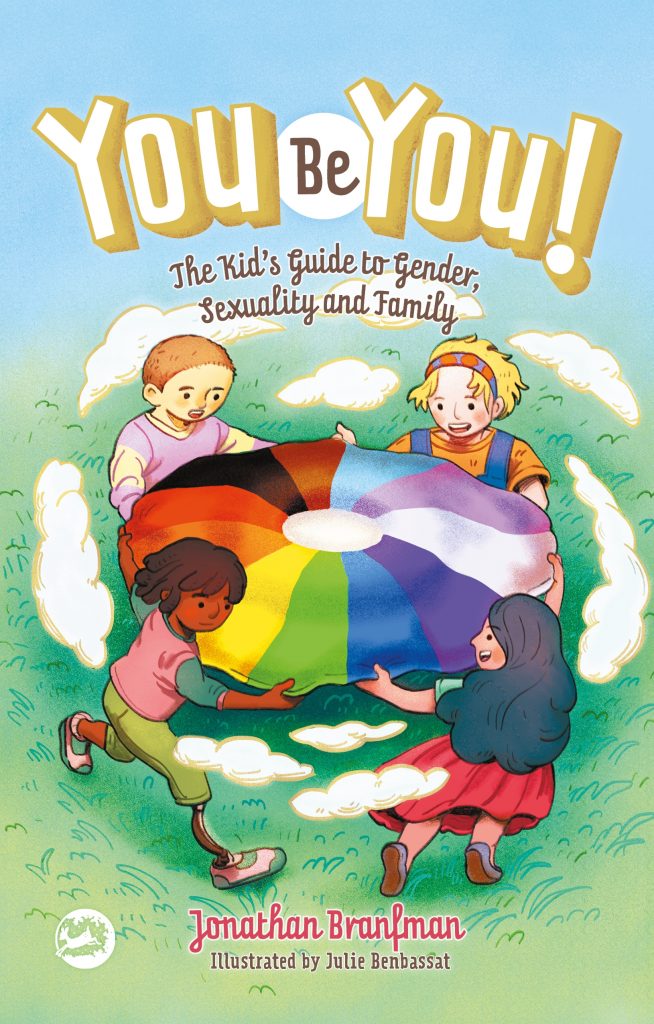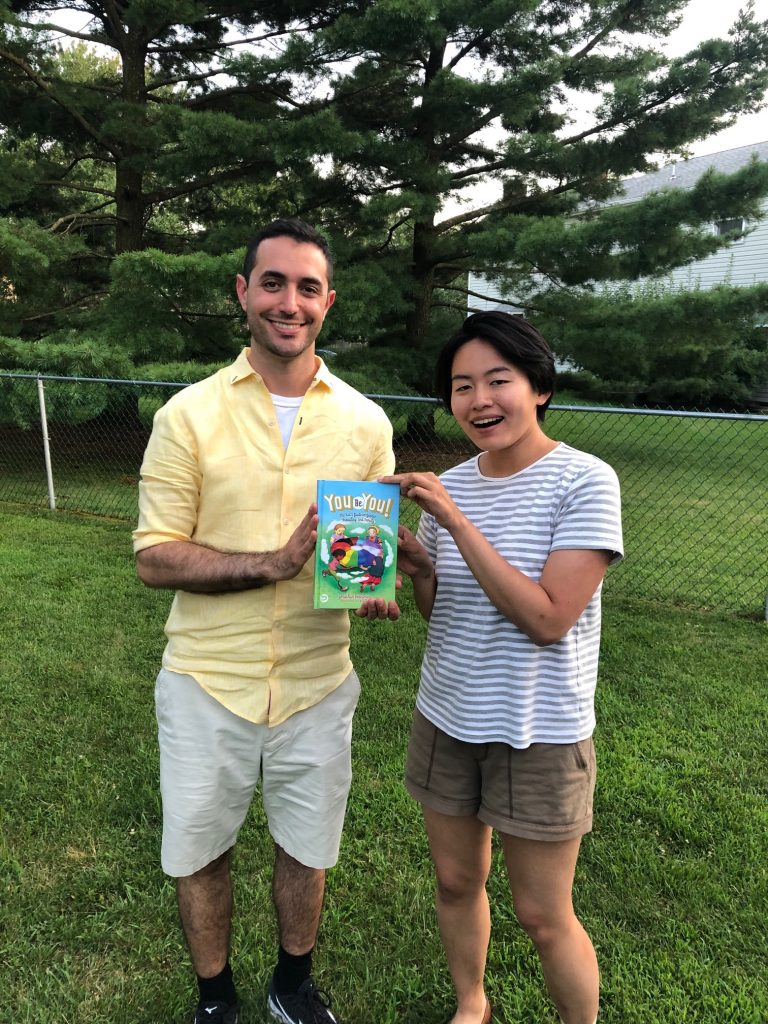 YOU BE YOU! is an educational children’s book for ages 7-11 that makes gender identity, romantic orientation, and family diversity easy to explain to children. Charming illustrations help children engage with concepts such as intersectionality, discrimination, privilege and allyship in a comprehensible and respectful manner. Here we talk with the author on his motivation for writing the book, how it will help readers learn more about gender diversity, and more.
YOU BE YOU! is an educational children’s book for ages 7-11 that makes gender identity, romantic orientation, and family diversity easy to explain to children. Charming illustrations help children engage with concepts such as intersectionality, discrimination, privilege and allyship in a comprehensible and respectful manner. Here we talk with the author on his motivation for writing the book, how it will help readers learn more about gender diversity, and more.
What motivated you to write a children’s book on educating others about LGBTQ diversity? Why do you see the importance?
This book grew from my work as a Gender Studies university professor and as a summer camp counselor. In both roles, my colleagues and I help young people unlearn harmful myths about gender and sexuality—like the myth that only two genders exist, or that gay people are sick, or that only straight people make good parents. These myths fuel emotional, physical, and legal harm: they often cause LGBTQ people to hate ourselves and cause straight or cisgender people to discriminate against us. Although it’s rewarding to help teens and adults debunk these myths, I started wishing we could skip such negative ideas entirely. Wouldn’t it be great if we all learned accurate, stigma-free facts about gender and sexual diversity in the first place, just like we learn the alphabet? This question led me to write You Be You, so that children of all genders and orientations can grow up accepting themselves and others.
Some people say that LGBTQ topics are inappropriate for children. How would you respond?
When adults call LGBTQ education “inappropriate for kids,” they’re speaking from an untrue assumption. They’re imagining that children live in a bubble, sealed away from any thoughts about gender and sexuality. But no such bubble exists: our society floods children with gender and sexual stereotypes from the moment they’re born. For example, think of a Disney film like The Little Mermaid, which tells girls that their happiness depends on attracting a man by being beautiful and quiet. In that movie, the song “Kiss the Girl” even tells boys that they need to kiss girls—and that they shouldn’t ask permission first. So a book like You Be You doesn’t push gender and sexual topics on kids who weren’t thinking about them. Instead, it helps kids to debunk common gender and sexual myths that they’ve already heard. It then replaces those myths with accurate knowledge to help kids be happier, healthier, and kinder.

Where do you see society in years to come as this sort of book becomes more available?
I hope this book helps to make our society kinder and better-informed. I hope that parents, educators, and children themselves use knowledge from You Be You to reduce anti-gay and anti-trans bullying. As kids grow up, I also hope they’ll bring this knowledge to all kinds of professions where it’s needed. For example, take neonatal medicine: Today many intersex babies still undergo unnecessary, harmful surgeries to make their bodies look male or female, and these surgeries can cause lifelong health problems. In the next few years, I hope that such surgeries become a thing of the past as new knowledge about intersex people becomes common among doctors, nurses, and lawmakers.
Who or what inspires you to keep doing what you do on educating others about social justice and equality?
My students renew my energy all the time. Since prejudice is still so common in our world, anyone who does social justice work sometimes feels drained. Whenever you see an anti-trans Twitter meme it’s easy to think, “Maybe all my effort makes no difference.” But then I see my students as they grow throughout each semester, questioning harmful stereotypes and getting excited to challenge inequality. I see how our learning not only changes their lives, but also the lives of others they’ll meet—their classmates, parents, employees, and children. Walking this path with students each year is a constant source of inspiration.
What do you want readers of your book to obtain after reading it? How do you see it changing their lives and their views on gender or sexuality?
I have two goals for readers. First is knowledge: I want them to know the basics about gender, sexual, and family diversity as well as privilege, discrimination, and allyship. For instance, I’d like any 10-year-old who reads this book to know, “When I grow up, it’s okay if I like men, women, genderqueer people, all or none. It’s okay if I want to get married or not, and okay if I want to have kids or not. And I should pay attention to discrimination that happens around me, even if it doesn’t seem to hurt me personally. And when I see discrimination, I should do something about it!” Alongside this knowledge, my second goal is comfort with LGBTQ topics. Even people who support LGBTQ rights often think of gender and sexuality as “difficult,” “edgy,” or “inappropriate” topics that they feel nervous to address with children. Instead, You Be You models how to speak easily and openly on these topics, the same way we teach kids to read a map or tend a garden.
A big thank you to Jonathan Branfman. You can follow Jonathan on Twitter @JonBranfman
If you would like to read more about YOU BE YOU! please visit intl.jkp.com